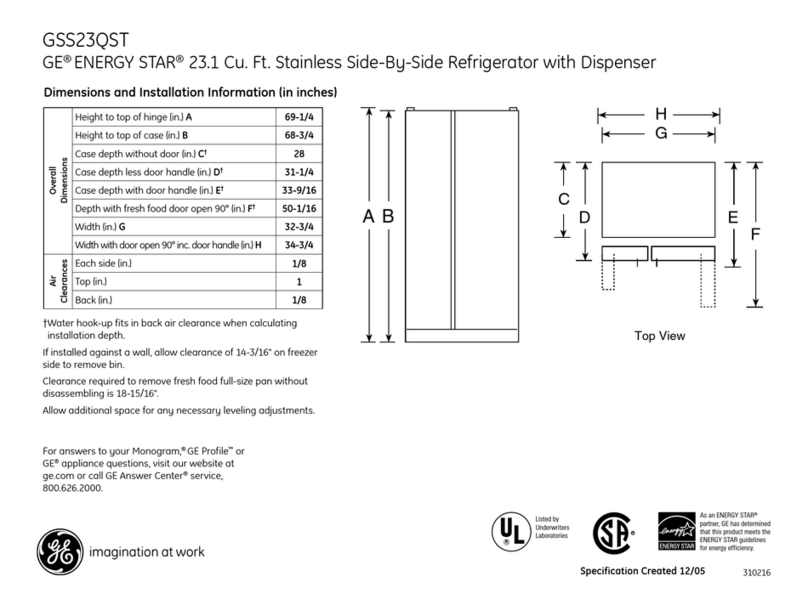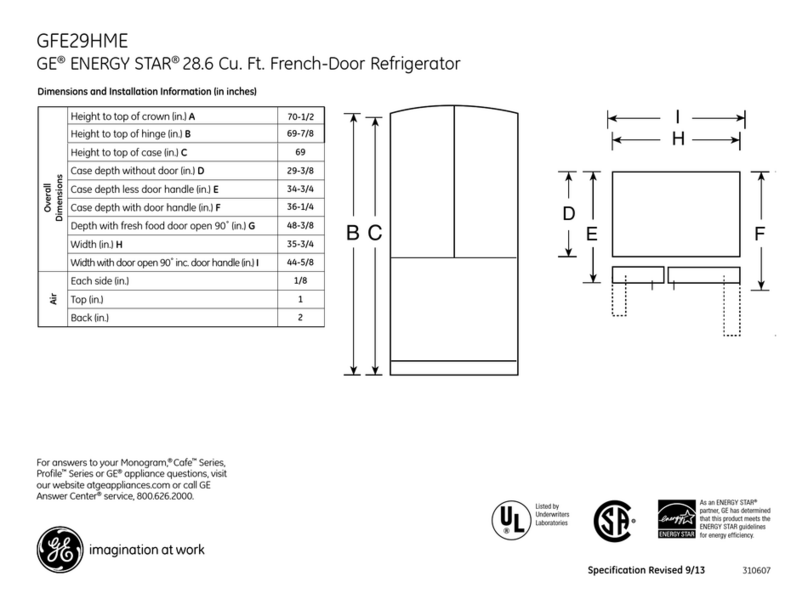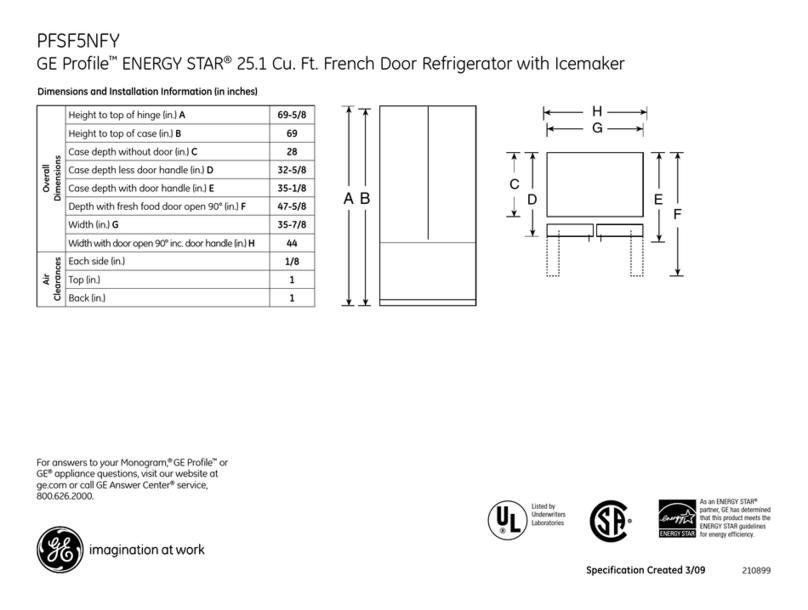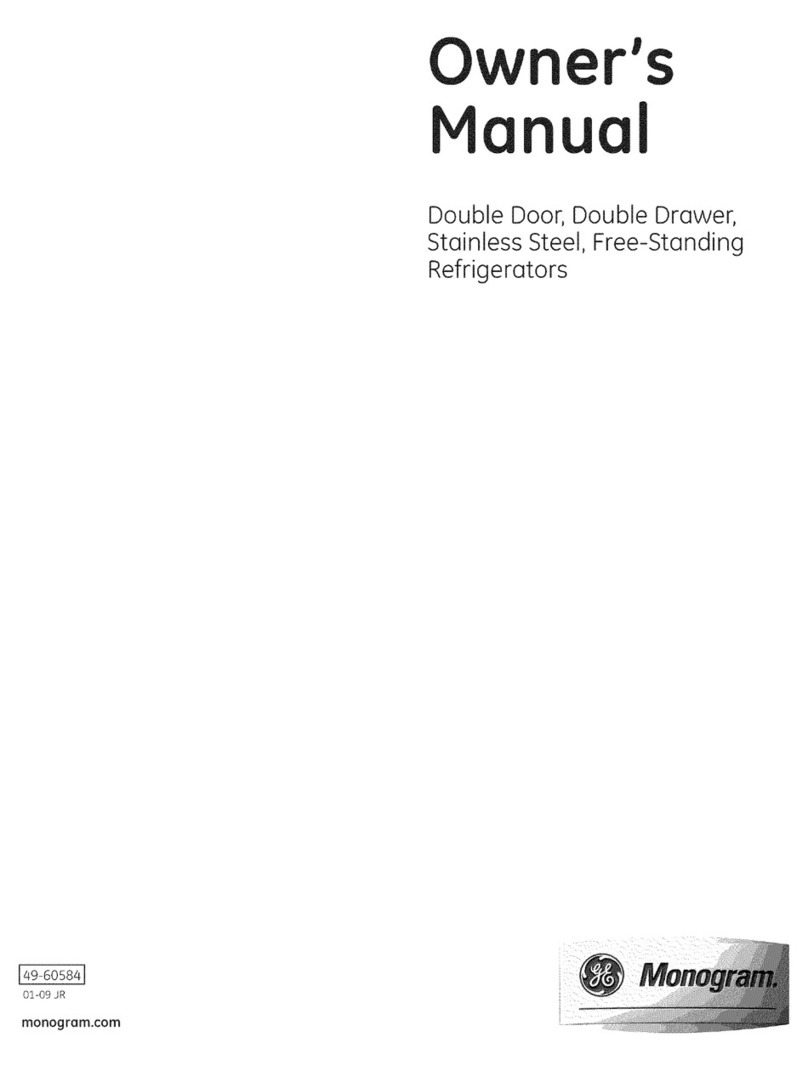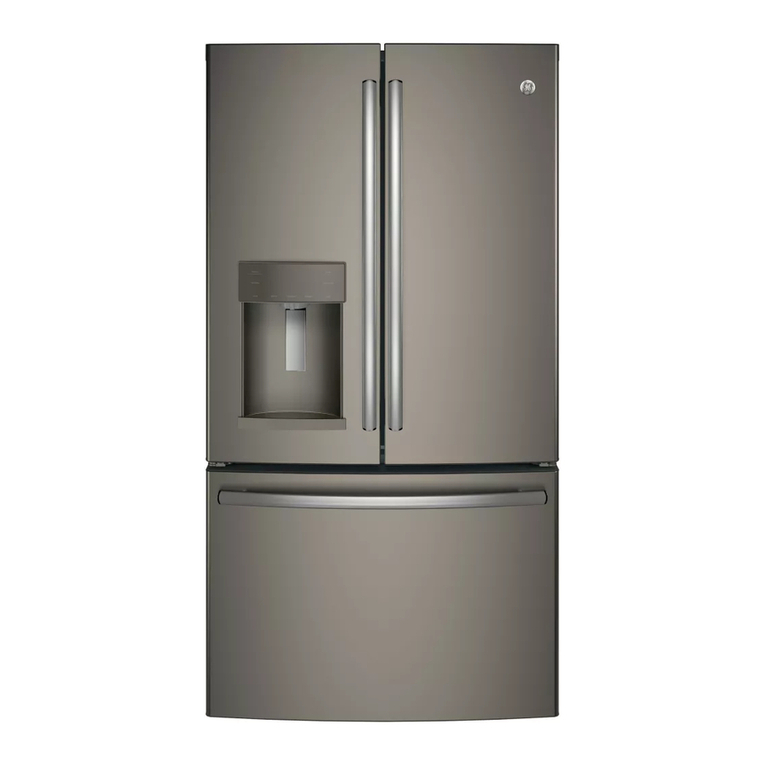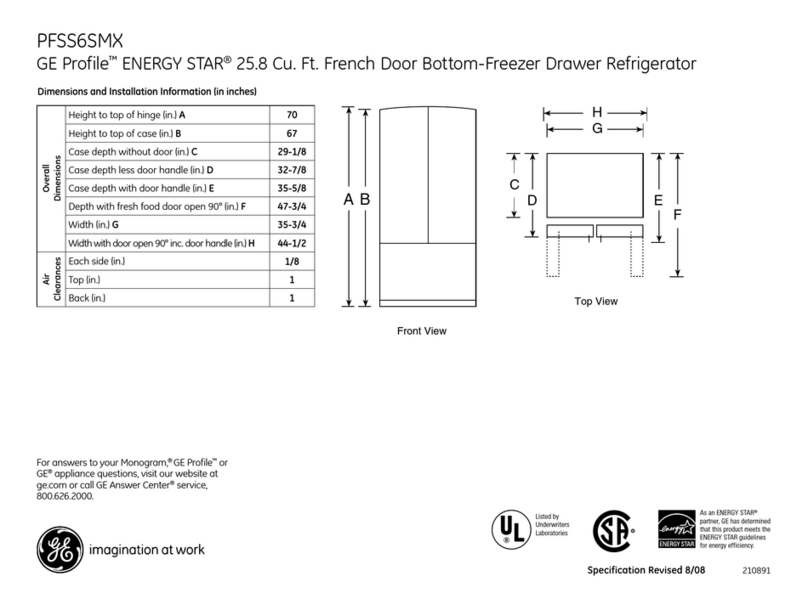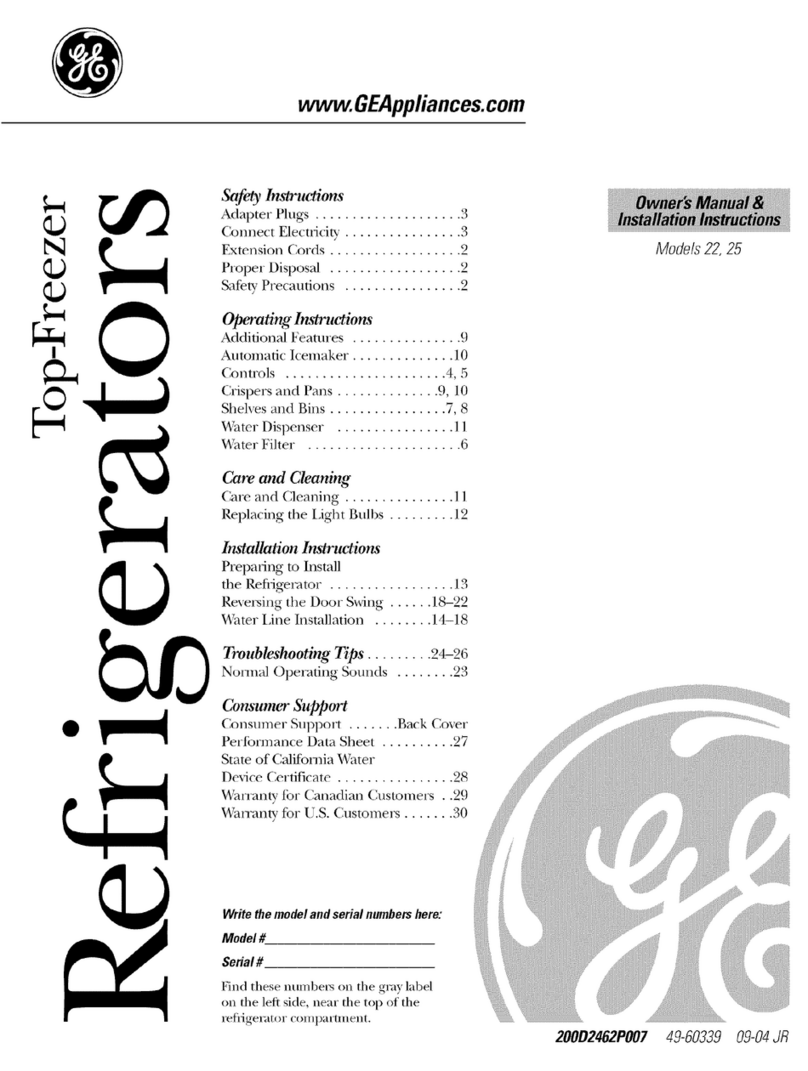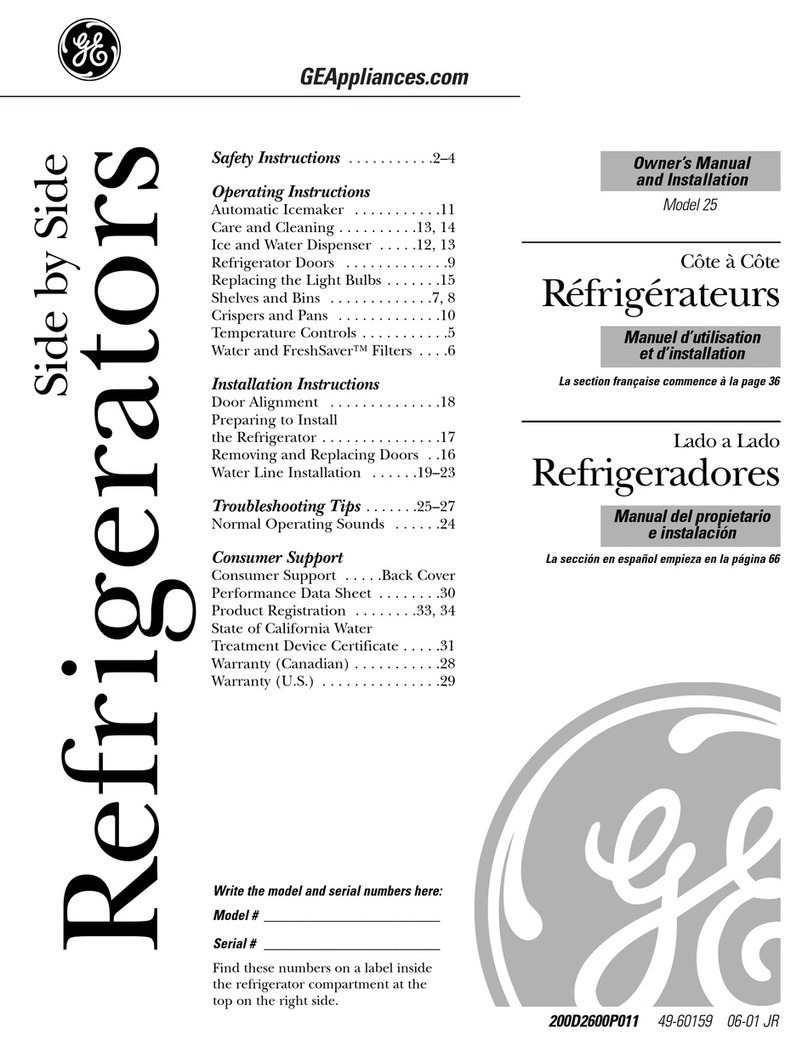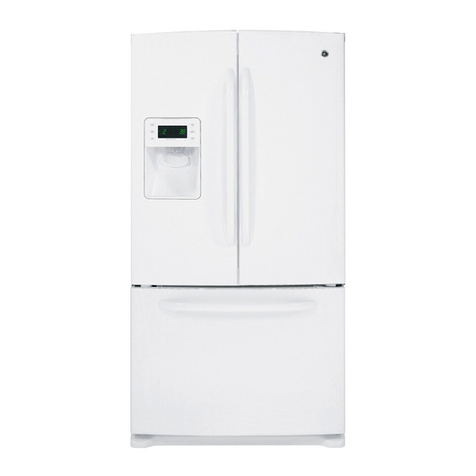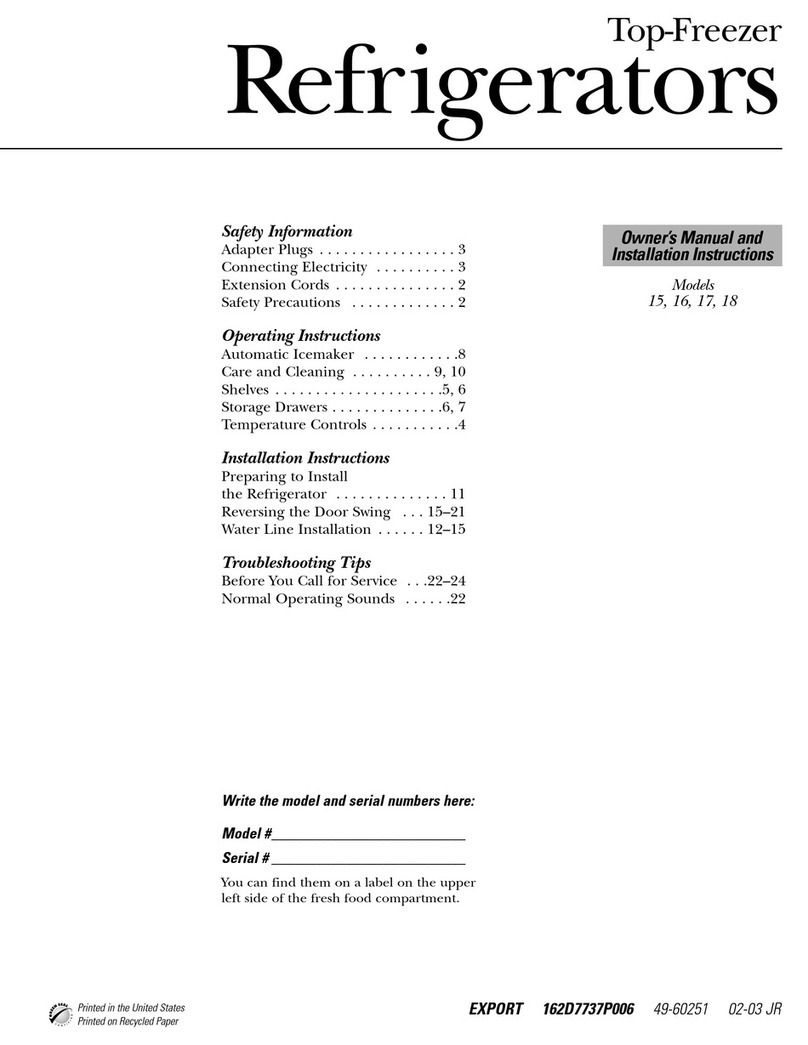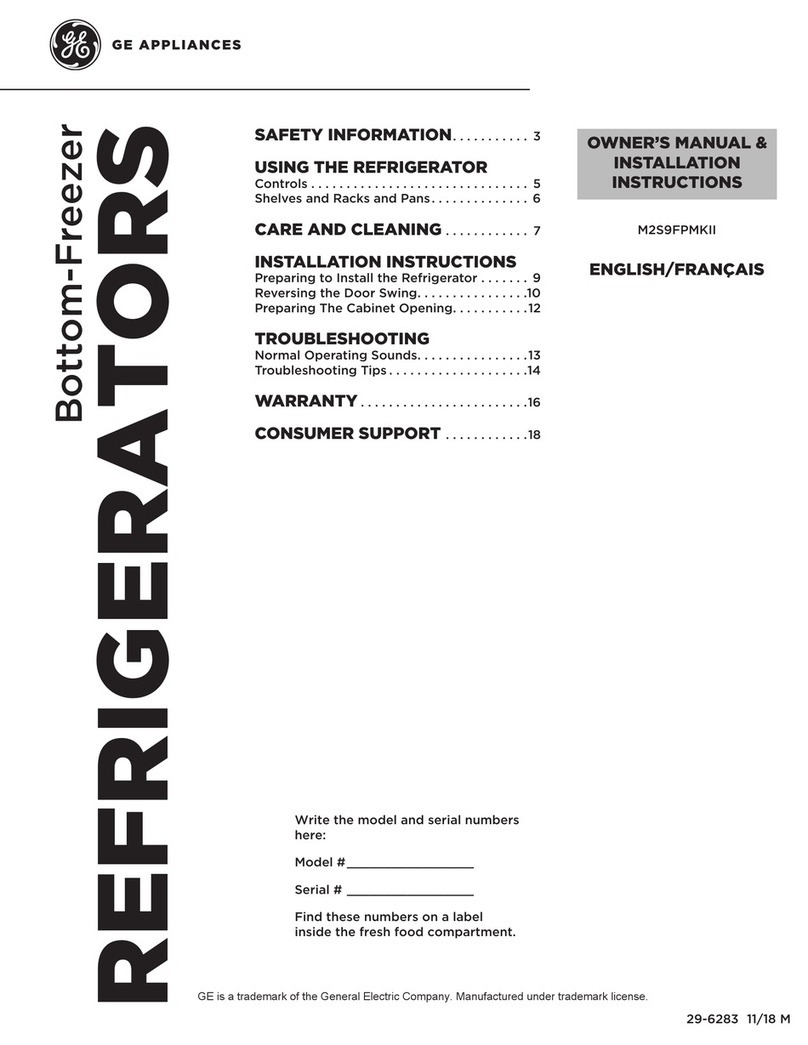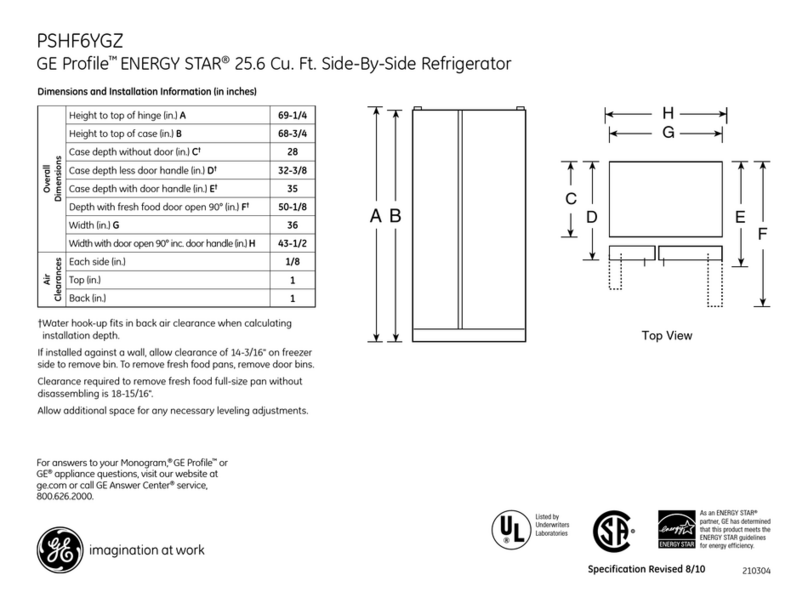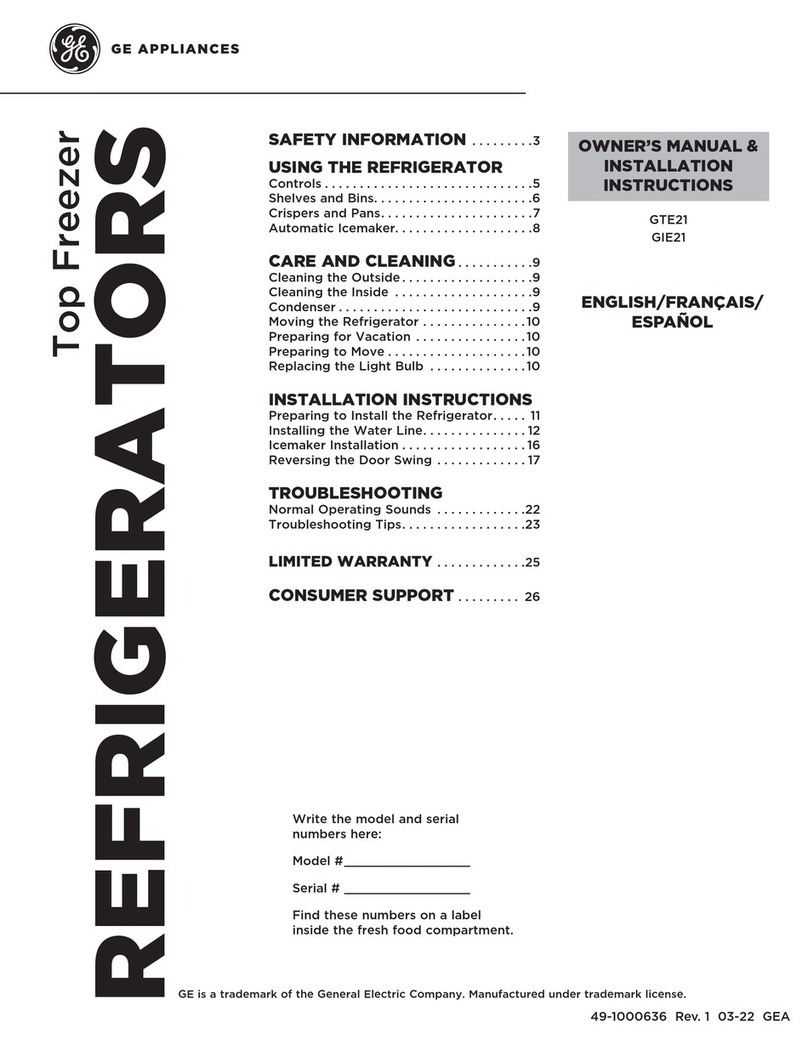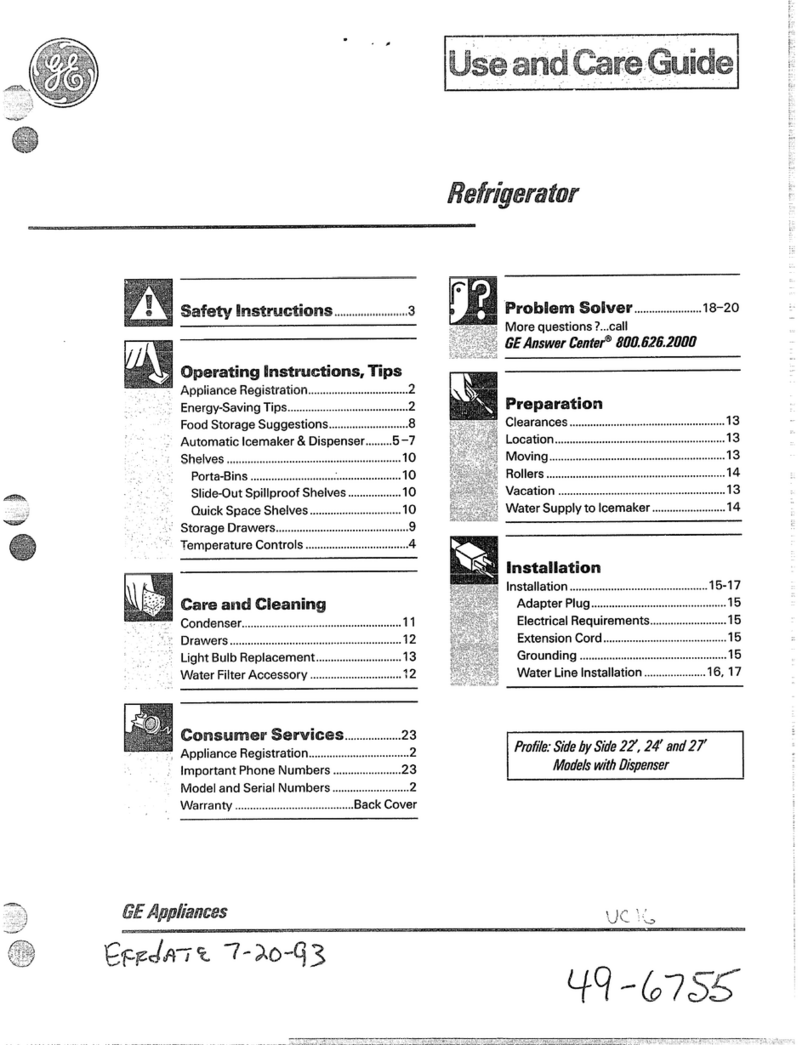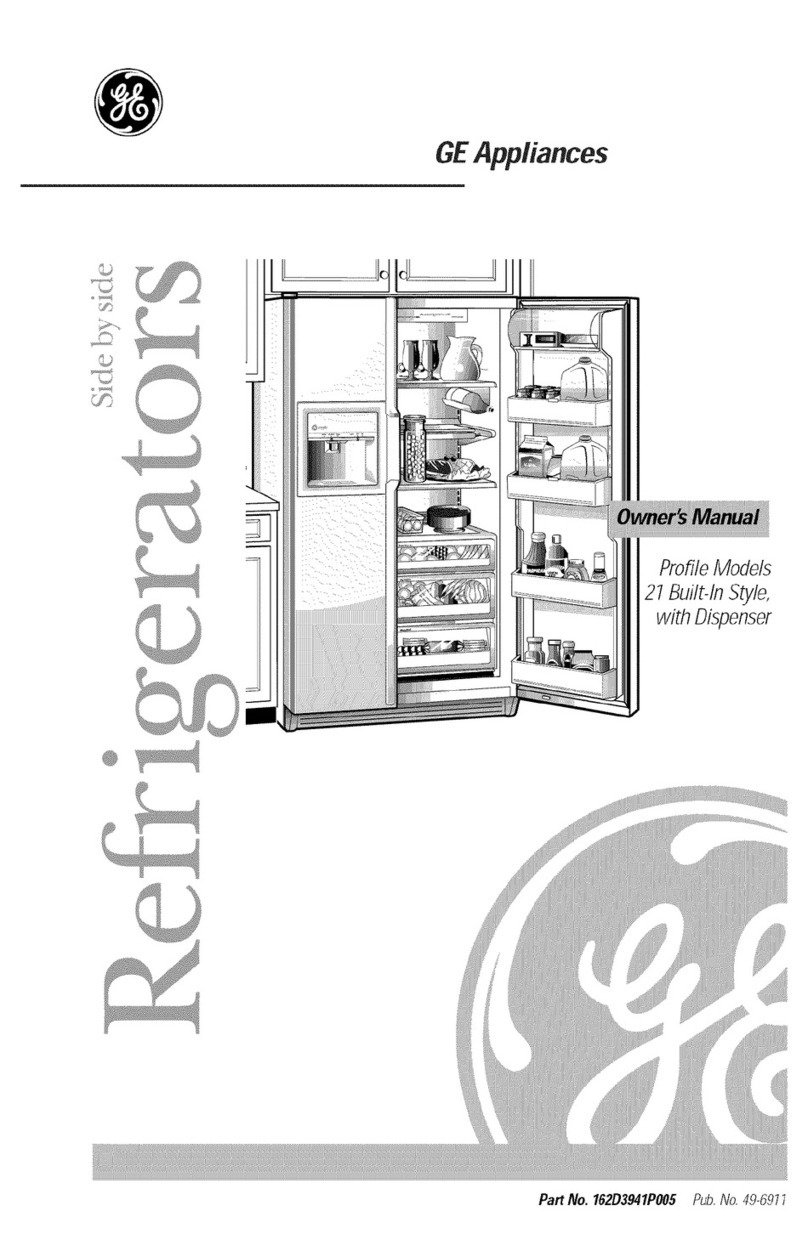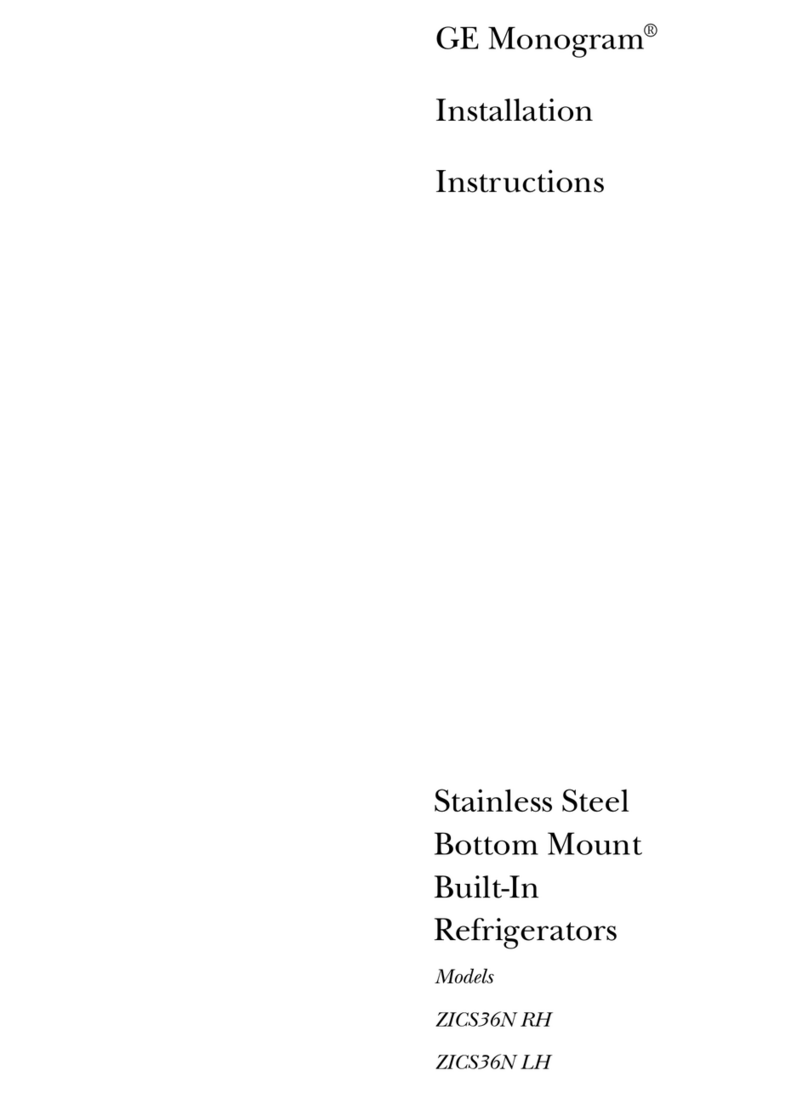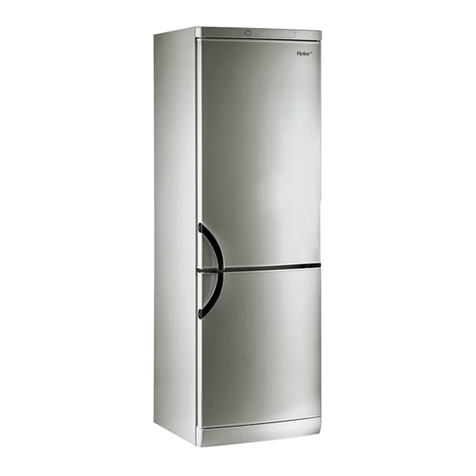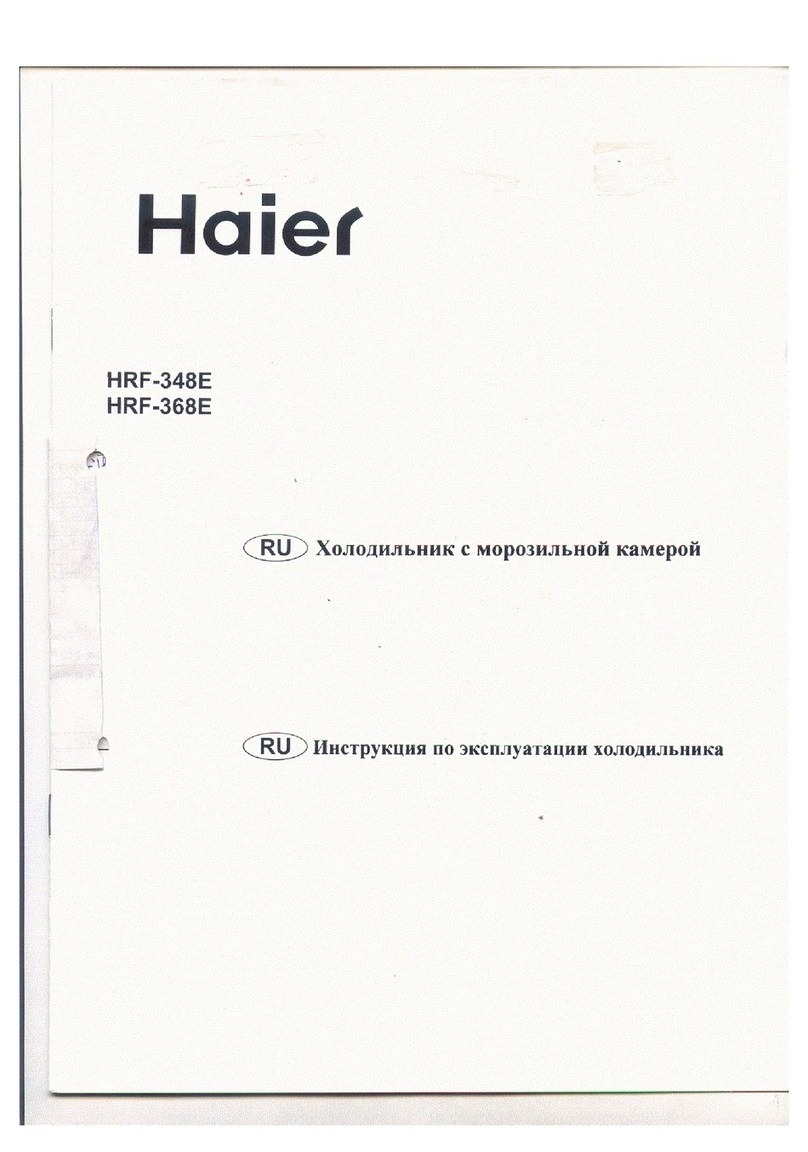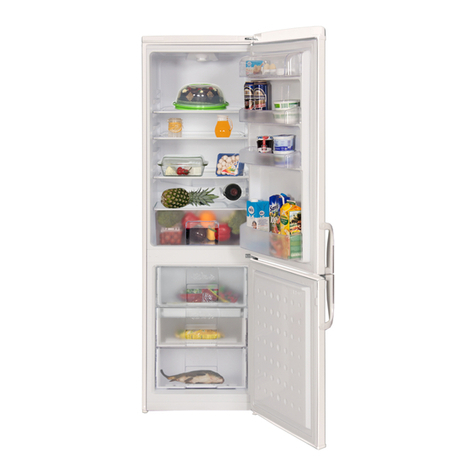
– 5 –
Technical Data
Important Safety Notice:
This information is intended for use by individuals
possessing adequate backgrounds of electrical,
electronic, and mechanical experience.Any
attempt to repair a major appliance may result in
personal injury and property damage. The
manufacturer or seller cannot be responsible for
the interpretation of this information, nor can it
assume any liability in connection with its use.
Compressor ...............................................833 Btu/hr
MinimumCompressorCapacity
Vacuum .......................................... 22 inches
MinimumEqualizedPressure
@ 70 °F...........................................65/65 PSIG
@ 90 °F...........................................79/80 PSIG
Refrigerant Charge (R134a) .............................12.50 oz
HMI Temperature Control..........................................**
OvertemperatureThermodiscLight..........WR50X10035
OvertemperatureThermodiscEvaporator ..WR50X10036
Defrost Heater ....................................... WR51X10065
Drain Trough ASM .................................. WR17X11194
Condenser Fan Motor ............................ WR60X10083
Condenser Fan Blade ............................ WR60X10049
Evaporator Fan Motor ............................ WR60X10043
Evaporator Fan Blade ............................ WR60X10050
Main Board ........................................... WR55X10400
Thermistors(2-FF, 1-FZ, 1-EV)...............WR55X10025
DamperAssembly Fresh Food ............... WR60X10085
Evaporator ............................................ WR84X10038
Compressor .......................................... WR87X10064
Condenser............................................. WR84X10037
Filter Drier ............................................. WR86X0096
Inverter ................................................ WR55X10155
Accumulator ......................................... WR02X11264
REPLACEMENT PARTS
TO CABINET
WIRING
COMMUNICATION
SIGNAL
COMPRESSOR
GROUND
GREEN/YELLOW
GROUND
RED
ORANGE
BLACK
BLACK GREEN/YELLOW
BLUE
BROWN
WHITE
INVERTER
*
Models ZIS360 - 45.58 kWh/mo. ZIS 360D - 48.67 kWh/mo. ZIS 420 - 47.08
kWh/mo. ZIS 420D - 51.83 kWh/mo. ZIS 480 - 49.33 kWh/mo. ZIS 480D -
56.50kWh/mo.
**
ModelsZIS360 -WR55X10166.ZIS 360D-WR55X10165. ZIS 420-
WR55X10164.ZIS 420D-WR55X10163. ZIS480- WR55X10162. ZIS480D -
WR55X10158.
WARNING: Disconnect power cord before
servicing.
Note: Reconnect all grounding devices.
All parts of this appliance capable of conducting
electrical current are grounded. If grounding
wires, screws, straps, clips, nuts, or washers
used to complete a path to ground are removed
for service, they must be returned to their
original positions and properly fastened.
Caution: To avoid personal injury when
servicing the condensing unit, stand on a ladder
which will give enough support to allow removal
of the top panel and safely allow access to
service the unit.
ELECTRICAL SPECIFICATIONS
NO LOAD PERFORMANCE
REFRIGERATION DIAGNOSIS
MaxDefrostControl
W/No Door Openings ............60 hrs @ 35 min
Evap.OvertemperatureThermodisc..............60 °F - 45
°F
Light Thermostat .....................................140 °F - 90 °F
Electrical Rating: 115 VAC 60 Hz.....................9.0 amp
Maximum Current Leakage............................ 0.75 mA
Maximum Ground Path Resistance ............ 0.14 ohms
Energy Consumption (HUMID) ................................. *
To access the low-pressure side of the system,
install a WR86X0097 valve only on the process
tube extending from the compressor case.
CONTROL POSITION 37-0 °F and
AMBIENT TEMPERATURE OF
70 °F 90 °F
Fresh Food, °F ....................... 35–39 .............. 37–48
Frozen Food, °F ..................... (-4)–4 .............. (-4)–4
Percent Running Time............. 60 .................... 80
CONDENSER
LOOP
PROCESS
TUBE
COMPRESSOR
*ACCUMULATOR
CONDENSER
HEAT EXCHANGE
EVAPORATOR
HIGH PRESSURE
(DO NOT USE)
*INVERTER
DRYER
CONDENSER FAN
(SEE NOTE)
Note: Fan blade mounted for maximum airflow with 1/2" of shaft exposed.
*Approximate location (Inverter and Accumulator).
REFRIGERATION SYSTEM
